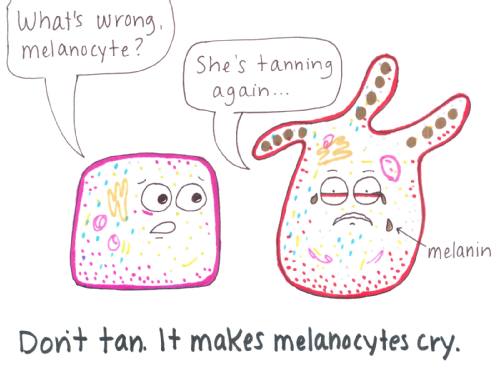Photoprotection Mechanisms in a Eumelanin Building Block
Supervisor: Dr Vasilios Stavros (Chemistry)
Melanoma is one of the most malignant skin cancers, responsible for around 2000 deaths per year in the United Kingdom alone [1]. It is believed that over exposure to ultra-violet light is the principle carcinogen. Interesting, although UV is a confirmed carcinogen, some exposure to UV is vital to maintaining one's health as UV light catalyses the reaction of pre-vitamin D into vitamin D, through a process which is thermodynamically unfavourable [2, 3]. This limited exposure to UV is required to prevent diseases and conditions such as rickets, muscle degradation and growth retardation in children, to name a few.
These selective pressures have resulted in the evolution of pigments called Melanins which absorb UV radiation to protect the body from harmful levels of UV exposure. Melanins are produced by Melanocytes which are found in the stratum basale layer of the skin extending out into the stratum spinosum layer. In particular, we are looking at the building blocks which polymerise together to make Eumelanin. The basic pathway for the synthesis of Eumelanin can be seen below.

Figure 1: A basic representation of the synthesis pathway of Eumelanin. Both DHI and DHICA are derived from Tyrosine. They polymerise together to form Eumelanin. The ratio of the two monomers can vary and doesn't have to remain constant.
So, what makes DHI and DHICA so good at their jobs of absorbing UV, and dissipating it in a way to reduce the risk of tissue damage? Well, it is not entirely understood. We are employing transient absorption spectroscopy to investigate how less complicated molecules, which have some of the same properties of DHI and DHICA absorb UV and how they dissipate it. Hopefully, this will shed some light (pun) on how Eumelanin does it.

Figure 2: Figure obtained from http://joyreactor.com/post/698263 (accessed 04 APR 2014).
[1] http://www.nhs.uk/conditions/malignant-melanoma/Pages/Introduction.aspx (accessed 22 MAR 2014)
[2] J. Ortonne. “Photoprotective properties of skin melanin”, British Journal of Dermatology, 2002, 146(61): 7 - 10.
[3] J. Reichrath. ''Sunlight, Vitamin D and Skin Cancer", Springer Science+Business Media, Advances in Experimental Medicine and Biology Volume 624, 2008, New York, USA.
